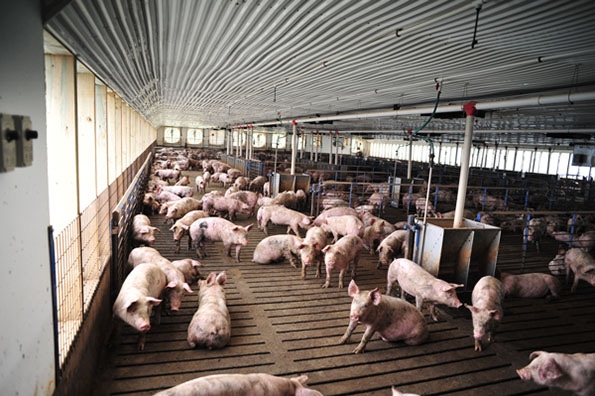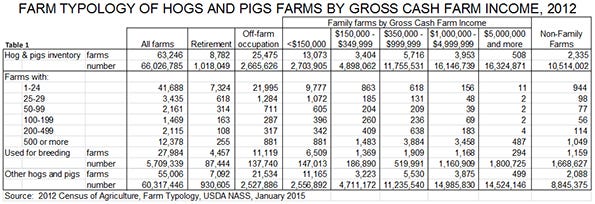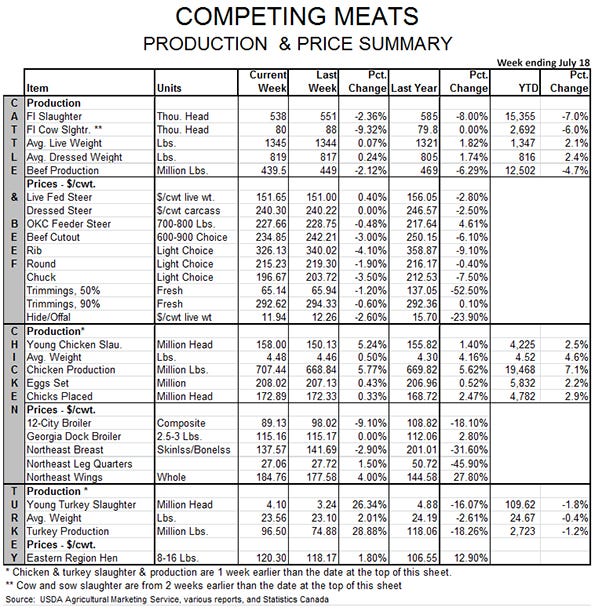July 20, 2015

God, country, Mom’s apple pie and family farms. That’s a pretty good foursome of American values, and it should be. We haven’t redefined Mom’s apple pie yet but the others seem to be always in some state of flux in today’s culture and none any more so than the family farm.
There was once a time when one did not have to differentiate farms. They simply were all family farms. That began to change in the ’50s and ’60s we suppose with the growth of company-owned poultry operations, most of which were necessitated by the failure of family owned operations and the need of a company with a feed mill or a processing plant to either secure a market for feed or a supply of birds. Even the large cattle feedlots in the Southern Plains were initially primarily family operations and many remain so today even though they use a variety of more “corporate” business practices.
The “family farm” remained the dominant business structure for the pork industry. Further, the “small” farm – at least by today’s standards – remained the primary unit of the pork industry into the 1970s. Very few hog operations numbered more than 500 sows at that time.
Enter new technology and new approaches. The new technology came in the form of better genetics, new veterinary medicine practices and products, better buildings and equipment and more and more knowledge of the challenges and benefits of confined animal production.
The “scientific approach” pioneered by so many farmers could be duplicated by traditional non-farmers and even employees. Large numbers of hogs could be raised, in many cases, at lower cost as these practices could be duplicated. Talented managers could apply their expertise across larger organizations. Many small farms had trouble competing and a main reason was, as a noted economist once pointed out, that you could not fire the manager of a small hog farm because he/she owned it.
Family farms important
So just how important is the “family farm” to today’s pork industry? The USDA provides an interesting look in a recently published part of the 2012 Census of Agriculture. The publication, 2012 Census of Agriculture Farm Typology, provides a wealth of information about the ownership, size and operational characteristics of U.S. farms.
The publication defines a “family farm” as “any farm where the majority of the business is owned by the operator and individuals related to the operator, including relatives who do not live in the operator’s household.” Further, a farm is “any place from which $1,000 or more of agricultural product were produced and sold or normally would have been sold, during a given year.” The USDA breaks all farms into groups, with family farms broken into the following categories based on gross cash farm income.
Small family farms – have a GCFI or $350,000 or less. This category is broken further into retirement farms (small farms whose operators are retired), off-farm occupation farms (ones whose operators report a primary occupation other than farming) and farm-occupation farms where operators report farming as their primary occupation. In addition, the small family farms category is broken into low-sales farms (those with GCFI of less than $150,000) and moderate-sales farms (those with between $150,000 and $349,000 in GCFI).
Midsize family farms – GCFI between $350,000 and $999,999, and
Large-scale family farms – with large family farms having GCFI between $1,000,000 and $4,999,999 and very large family farms having GCFI of $5,000,000 and more.
Non-family farms are defined as any farm where the operator and persons related to the operator do not own a majority of the business. The USDA offers no size categories for these operations.
Let's look at the data
Of primary importance to me, of course, were the data on hog farms. Table 1 shows the data for hog inventories in 2012. I think there are a couple of very important takeaways from this table.
First, there are 26,654 family farms raising hogs that claim farming as their primary occupation and they account for an inventory of 51.829 million hogs. Those farms represent 92% of all of the primary occupation farms with hogs and 83% of the total hog inventory on those primary occupation farms. So even omitting the farms run by retirees or operators whose primary occupation is not farming, these family farms are a major, major part of the industry.
Second, non-family farms represent just 3.7% of total farms with hogs and pigs and just 15.9% of the total inventory of hogs. Now some may say that 3.7% of the farms with 15.9% of the hogs is a little out of whack but it also says that 96% of the farms (including the non-occupational ones) hold 84% of the hog inventories.
Finally, we have to acknowledge that holding an inventory and owning a pig are two different things. Many of the pigs on these farms are owned by “contractors” or “integrators” and fed by family farm operations on contract. Does that mean that a) the operations are not important or b) the hogs are not important to the operations? Absolutely not on both counts.
Contract hog production has been the ticket to stay on the farm for many families, both old and young. While the survey hasn’t been done in a few years, every time Professor Glenn Grimes and John Lawrence asked contract growers whether they were satisfied with their arrangements and whether they would continue, the positive responses were overwhelming. Contract hog growers value their place in the industry and view their enterprises with great pride. They are a different kind of family farms than we once knew but they are family farms indeed – and important to us all. 

About the Author(s)
You May Also Like





